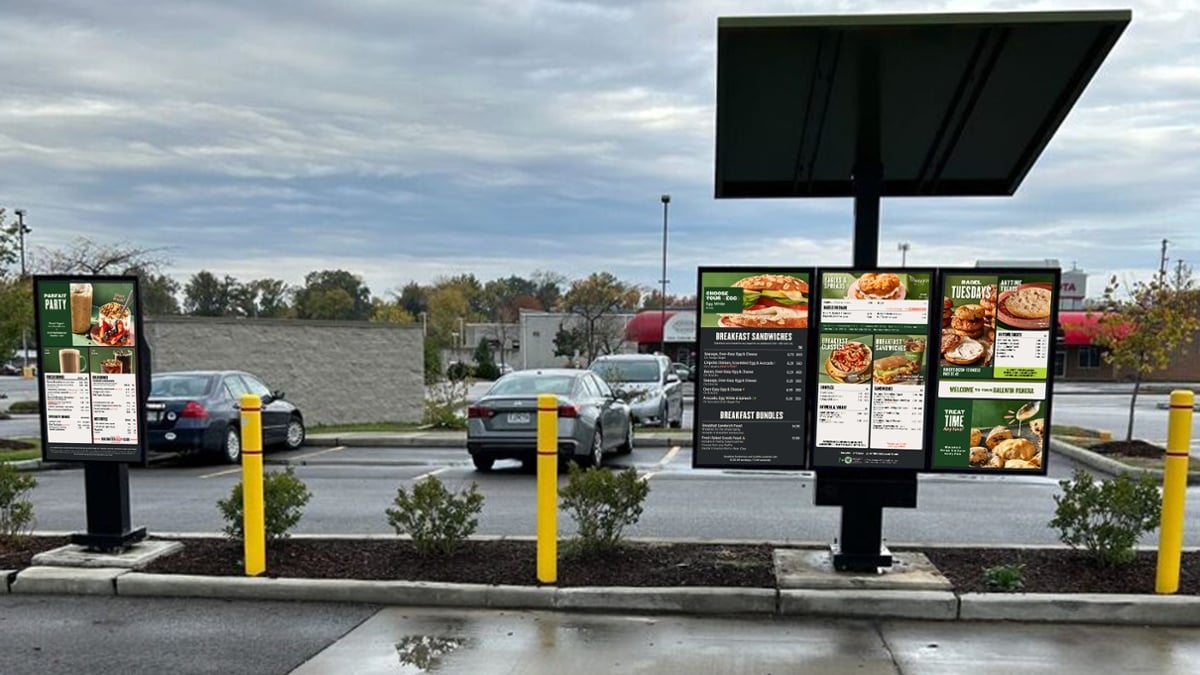The Basic Components of Your Digital Signage Network
In today’s business world, you won’t find too many people scratching their heads when they hear digital signage. True, in some industries such signage is more prevalent—retail stores and entertainment venues, for example—but its use in retail banking, healthcare, outdoor advertising, and the enterprise-at-large is soaring.

When people think of digital signage, they often think only of the display technologies—the LED screens, video walls, or the electronic billboards themselves—as opposed to a digital signage network. There’s a good reason for the distinction. Anyone can use digital signage displays, but that doesn’t imply they have a digital signage network. For example, the local convenience store can hang up a digital sign or two. They can create a slideshow using PowerPoint or Google Slides, take it to the sign on a USB stick, upload it, and away it goes. The content isn’t very dynamic, but these businesses don’t need more than that. And the owners don’t mind sneaker-netting a new or updated piece of content to digital signage every few weeks.
When you start talking about screens strategically placed throughout a large department or grocery store, however, it gets more difficult. Add multiple venues across the city, state, region, or country, and this becomes cost- and time-prohibitive, dramatically limiting the frequency and speed with which content can be updated. You must have physical or wireless connectivity between your digital signage devices and the source of your content—so you can deliver the content without having to be in two (or a hundred) places at once.
But adding an ethernet cable between your collection of digital screens and your PC does not a digital signage network make—or at least not a very flexible and robust one. There are several elements without which your digital signage “network” is little more than a collection of connected digital screens. Before jumping into buying the latest display technology, here are the basic components you should consider—and in the following order. Keep in mind that having defined a digital signage strategy from the beginning will help inform your decisions for all the basic components of your digital signage network.
- Your actual network. Whether it’s a LAN, MAN, WAN or a combination of them, even small businesses have their own private network (or at least uses encrypted connections over a public one). The question is whether your current network has the speed and bandwidth required to handle the deployment of image and video-based content from a single or multiple sources, plus streaming data from third-party services.
The answer depends on how implementing your digital signage strategy will increase the current network usage. Your strategy includes how many screens, their placement and purpose, and the types and frequency of content that will help accomplish their purpose. If your network bandwidth is already heavily taxed—or if the addition of digital signage content might impede your critical operations—consider upgrading your network first, creating a separate physical network, or one of the newer 5G-based wireless networks. - Your digital signage platform. Another key component of a digital signage network is the software that allows you to create, manage, schedule, and deliver content to all the locations and devices on your network. We place this component higher in the list than actual screen devices because your signage and content strategy will determine what capabilities you’ll need. A small shop with a couple screens and a rotating PowerPoint slideshow may not need anything fancy in the way of content creation or deployment tools. But for complex, engaging, and interactive content on hundreds or thousands of screens across multiple departments, locations, and regions, your choice of software can enable (or inhibit) your success.
For example, software like our ReflectView and Reflect Xperience provides capabilities that include:
• Content management
• Device management
• Network optimization
• Third-party data and application integration support
• Detailed reporting
• Centralized and local content creation
• And more - The hardware: Screens. Given the constant evolution of screen size and resolution, touchscreen, wireless connectivity, and more, it’s easy to focus on the hardware above all else. Our experience is that selection of the display devices and media players themselves should be informed by the digital signage and content strategies, not the other way around. That is, the size, resolution, interactivity, and—to some extent—the cost of screens should be based on the location, purpose, and type of engagement required from each one, rather than whether it is the latest-and-greatest model.
These days, digital signage networks include screens that range from tablets strategically placed on specialty counters to full wall theater experiences. In between these you can find simple monitors, regular TV screens, and smart TV screens, all in a range of sizes and grades (including consumer, commercial, and professional grades. Some displays have active touchscreens, whereas others are view-only. The variety of screens you select (and the amount you spend) will depend on factors like:
• Location and physical environment of each screen
• Length of expected continuous playtime per day
• Interactivity of the content to be displayed
• And budget (of course)
Obviously, harsher environments, longer daily playtimes, and high levels of physical interactivity all require more professional grade equipment to avoid constant maintenance and replacements. As for interactive screens, remember than not all displays need to be touchscreens, especially since customers have become wary of touching public devices. Software solutions like Reflect Spark Framework allow you to develop and deploy interactive experiences that leverage a customer’s own mobile device rather than costly touchscreens. - The hardware: Media players. As with screens, the characteristics of the media players you choose is dependent on many factors. Just as ordinary flat panel TVs won’t hold up the 16 to 24 hours of play, week in and week out, neither will low-cost consumer-grade players.
Commercial and industrial can not only stand up the prolonged playtime used in retail, banking, restaurants, and other enterprise settings where use of digital signage is prominent, but they are also constructed of more solid materials for more demanding environments. They can resist heat/cold, moisture, dirt, grease (in the case of restaurants), impacts, and other hazards.
Some considerations when selecting media players include:
• Resolution of the associated content and screens (today’s consumers are used to ultra-high definition)
• Local storage capacity so that your digital signage platform can download and store content on the device itself
• Support for streaming to multiple zones (split screen) and newer digital signage apps (depending on your digital signage platform)
• The ability to allow your digital signage platform to perform remote troubleshooting and management. - The digital content itself. This component may seem obvious, but it’s important to know that content creation is an ongoing commitment. The types of content you create will depend on your digital signage content strategy.
• Traditional video content can work for some locations and screens, but longform video won’t hold a shopper’s attention for long. Motion graphics and animated typography and iconography can be more effective for communicating with buyers.
• Dynamic content based on both internal data and third-party data feeds can capture viewers’ attention with an in-the-moment experience.
• Interactive content won’t likely belong on every screen in your digital signage network, but for certain applications—such as retail product advisors, wayfinding systems, and more—it can provide powerful, engaging experiences.
Ready to go beyond “the basics” for your digital signage network?
If you have only a few screen devices here and there, you probably haven’t read this far. In that case, you already have what you need. But if your digital signage needs require managing a lot of screens across a wide area and with multiple purposes, you need to consider all the basic components described above.
Your digital signage network is a serious investment, and as you can tell, we believe strategy is a key component of it—as is the software that enables you to create and manage the content that you’ll present on it. At Reflect Systems, we have deep experience with both. Better yet, contact us to find out how we can help ensure you get the best long-term ROI from your digital signage network and your content.
Share this
You May Also Like
These Related Stories

Small Screens: How Digital Signage Connects With Devices That Already Capture Your Audience's Attention

Drive-Through 2.0: Why integration is the root of success



